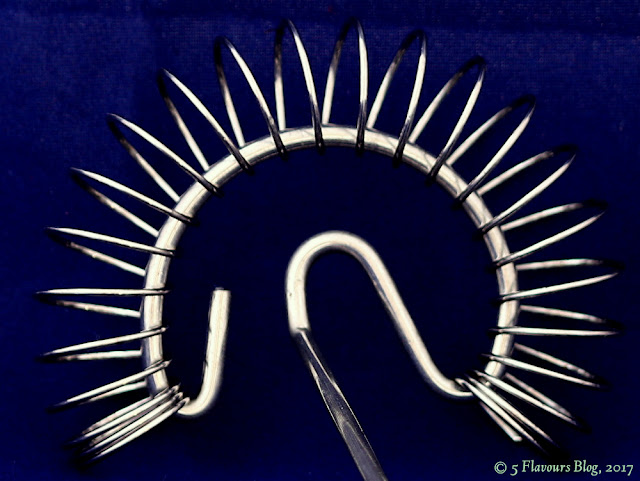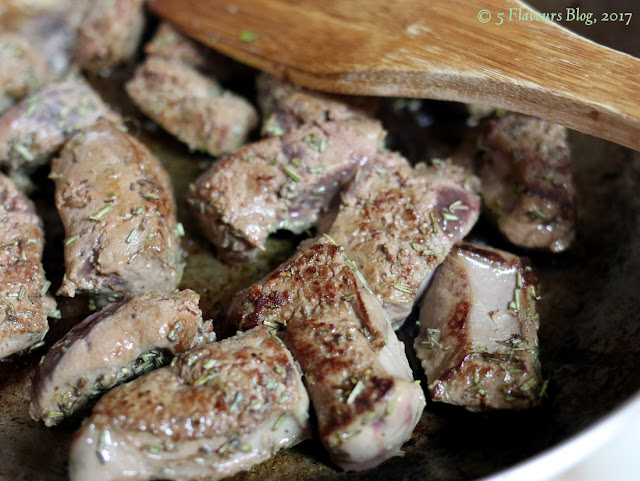Beef Liver with Caramelized Onions & Balsamic Reduction
Liver has an unfair culinary reputation! We conveniently forget that the
liver is a busy place with serious physiological responsibilities and around
500 biochemical functions. Understandably, liver doesn’t have time to sit
around and taste – or look – nice. This is the duty of accomplished and oft
sexy cooks. And we are all at least accomplished cooks, are we not?
Overcooking liver is possibly the most grievous error made by many. Inevitably
this results in the universally disliked and characteristically unpleasant
bitter, metallic taste and desiccated texture. To compound this disaster even further:
the unpalatable taste of badly prepared liver is also a function of the
animal’s age, the freshness of the uncooked liver and – to a certain extent – it’s
diet in life.
A little insight into the liver’s function, composition and structure
already hints at how to prepare it well. In most mammals, the liver is both the
heaviest organ and largest gland. Two major blood vessels feed into and depart from
it. It has two major lobes which are in turn subdivided into lobules, each fed
and drained by capillaries and ducts, respectively. Millions of hepatic cells
(held together with fine, irregular connective tissue layers) make up each
lobule. In life the organ is responsible for the majority of bodily protein
synthesis and degradation, plays several roles in carbohydrate and lipid metabolisms,
and produces and excretes bile – a key component in digestion. Additionally, it
also stores a plethora vitamins and minerals, produces albumin and breaks down
most medications and waste products. Remember what I said about it being a busy
place?
Now it becomes somewhat clearer why liver has a unique taste and
non-uniform texture. Subsequently, three culinary avenues present themselves
for doing justice to the humble, overworked liver – depending on the audience.
We can either attempt to obliterate the natural taste by slathering it in
peri-peri or chilli spices, or we can modify the flavour profile significantly for
finicky palates with a supporting cast of smoked meats, sauces or vegetable
additions to make it more acceptable, or we can gently subdue the bold liver
foundation with a few elegant additions and a spot of technique. This recipe
follows the latter avenue.
Many readers will not like this: beef liver in strip, cube or cutlet
form absolutely needs to retain a measure of pinkishness in the center to bring
out the best in it’s flavour, taste and in particular: texture. Either slice
liver into thin, stir-fry style strips and flash fry it, or cut it into finger
wide (and thick) strips and sauté over medium high heat until the bloodiness
disappears but some pinkishness remains in the centre.
Liver needs to be pan fried, broiled or sautéed for optimal results. It
does not do well with baking, boiling or braising unless afterward being structurally
modified into pâté’s, spreads or stuffings (e.g. skilpadjies & pofadders),
or is ‘diluted’ in a stew or casserole with other strongly flavoured
ingredients or robust vegetables.
BEEF LIVER WITH CARAMELIZED ONIONS & BALSAMIC REDUCTION
– PRINT RECIPE –
Recipe yields:
|
Preparation time:
|
2 x Portions
|
± 30 minutes
|
Special Equipment Required:
1 x Spiral wire whisk
Ingredients:
Beef or calf’s liver, pre-cleaned
& prepared
|
± 350g
|
Dried rosemary
|
5ml
|
Medium sized onions, finely
sliced
|
2
|
Sunflower oil
|
15ml + 15ml
|
White sugar
|
15ml
|
Balsamic vinegar
|
45ml
|
Sour cream
|
30ml
|
Lemon juice
|
10ml
|
Chopped garlic
|
7.5ml
|
Orange peel, finely grated
|
5ml
|
Salt
|
5ml
|
Dijon style mustard
|
2.5ml
|
Dried sage
|
2.5ml
|
Method:
1. Rinse the liver well under cold, running water. Dry thoroughly
with kitchen paper towels. Slice evenly into long strips, one finger wide and
thick. Ensure that the strips are as close as possible to equally thick and
wide. Cut the strips into two finger wide lengths. Transfer to a nonmetallic
bowl, add the rosemary, stir through, cover and set aside until needed.
2. Mix the sour cream, lemon juice, garlic, orange peel, salt,
mustard and sage in a small mixing bowl. Stir through and set aside.
3. Add the sunflower oil to a medium large sauté pan over high
heat and add the onion when the oil is hot. Sauté until the onion turns soft
and translucent. Add the sugar; turn the heat down to medium and sauté with frequent
stirring until the onion starts to brown. Add extra oil if necessary. Brown the
onions until caramelized to taste. Transfer the caramelized onion to a bowl and
set aside.
4. Add the second portion of oil to the pan and adjust the heat
to medium high. Add the liver in one batch when the pan is hot. Allow the
pieces to brown for one minute. Turn the pieces over and brown on the other
side for a further minute. Stir the liver frequently from this point on until
the liquid in the pan has evaporated. Cut a piece in the pan to confirm it is
pink in the centre. Sauté a further minute or two over medium heat if the pieces
are still undercooked.
5. Transfer the liver to the bowl with the caramelized onions. Adjust
the heat to moderate and add the balsamic vinegar. Make sure sufficient
ventilation is available to reduce the vinegar fumes that will come off. Use the
spiral wire whisk to stir the liquid and scrape the pan to lift any caramelized
and stuck residues. Reduce the balsamic vinegar until syrupy.
6. Add the cream mixture and stir through until the liquid
starts to simmer. Return the reserved liver and onions and stir through until
thoroughly warmed.
7. Remove from the heat and serve immediately.
Comments:
¨ Fresh liver should only have a faint, meaty odor. The texture
should be soft but still quite firm when touched. It will be moist but should definitely
not be slimy. Also, liver degrades quickly in a refrigerator but freezes well
when it is inconvenient to prepare it. Thaw the frozen liver for 24 hours in a refrigerator.
¨ Thickly sliced supermarket or butchery liver should be rinsed
under cold, running water before use. Pat dry with kitchen paper towels before working
with it, as the wet liver is very slippery and difficult to cut into even pieces.
Use a shaving sharp knife for clean, uniform slicing.
¨ It is common to marinate liver in vinegar, lemon or lime
juice for an hour or two prior to cooking as a measure to subdue the bold liver
taste. I prefer to avoid this step as I find it tends to reduce the cooked liver’s
taste and flavour excessively. What can I say? I like ‘real’ liver.
© RS Young, 2017
– RECIPE INDEX PAGE –
Follow Me on Facebook
Note:
Post
updated on 2024.02.24 to include:
1.
The updated Recipe for downloading as a PDF file, and
2.
Recipe Title and Print Recipe, Recipe Index and Facebook & Pinterest follow
links.






Comments
Post a Comment